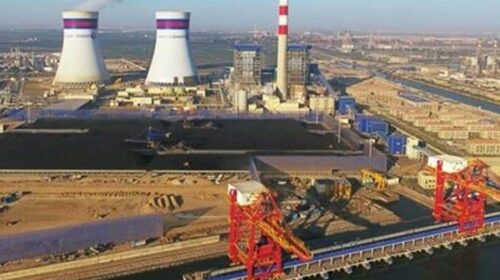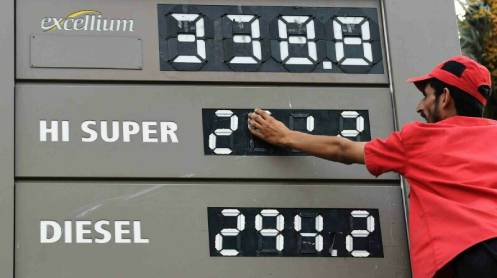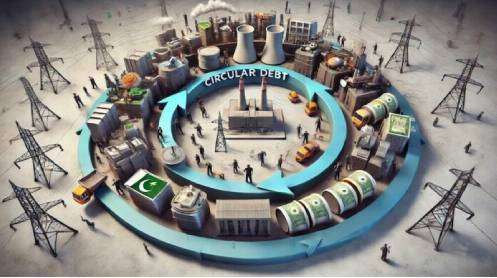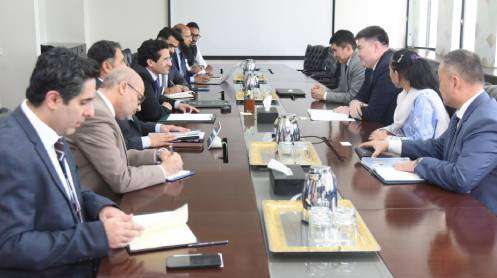Pakistan must pursue its indigenous coal objective for its long-term strategic energy security. The utilisation of the massive lignite reserves of 175.5 billion tonnes, the world’s sixth largest and equivalent to combined oil reserves of Iran and Saudi Arabia, found in Sindh’s Thar region in place of the expensive, imported fuels — coal, furnace oil, and RLNG (re-gasified liquefied natural gas) — for electricity generation is crucial to Pakistan’s economic ambition to achieve higher growth, boost exports and create new jobs through industrialisation.
Besides, the displacement of imported fuels with Thar coal will help tackle the country’s never-ending balance-of-payments difficulties by reducing the energy import bill, result in huge foreign exchange savings, and reduce – and ultimately eliminate – the fiscally unsustainable energy subsidy burden on the government’s budget in addition to making electricity affordable by drastically cutting power production costs.
It goes without saying that the lower electricity production cost will go a long way in helping the government liquidate growing power-sector debt, also known as “circular debt”, that already has crossed the Rs2.5 trillion mark, as well as bring the surplus generation capacity in the country under use and end chronic blackouts.
The Thar lignite reserves have the potential to produce over 100,000MW of electricity over the next 30 years. Thus this shift can make us energy secure for the next three decades.
Electricity at its current price is not affordable for businesses or residential consumers. According to the government, the electricity generation cost rose by 66.2 percent to Rs9.22 kWh in March this year from Rs5.55 kWh a year ago owing to higher imported fuel prices on supply disruptions and Ukraine war.
Since local coal prices are not sensitive to the international market fluctuations, the volatility in the global rates will not impact on the cost of local generation based on the Thar lignite.
At present, local coal from Thar is available for as low as $60 per tonne and with increase in its production, its prices will fall further to under $50 by the end of this year and below $30 a tonne by the end of 2023. Imagine the reduction in the generation costs if we shift to local coal.
Currently, around 16 million tonnes of coal is being imported by Pakistan to operate its four power plants and if these plants were running on local coal, massive amounts of foreign exchange savings could have been achieved besides lowering domestic electricity prices as the recent commodity super cycle has witnessed imported coal prices peak to $420-470 a tonne from $100-120 a tonne, making imported coal even more expensive than furnace oil for power production.
Currently, the imported coal is costing $330 a tonne. It is a well-established fact that indigenous coal alone can help Pakistan save foreign reserves and produce sufficient power for the nation.
Thar coal is the solution to Pakistan’s growing energy crisis and unaffordable electricity prices as the over-dependence on imported, costly fuels amid supply disruptions for power generation has only proved bad for the country by creating supply and demand gaps. The Engro Powergen Thar plant is producing much cheaper electricity than other imported coal-based plants at Rs3.62 kWh.
In comparison, the cost of power production through imported coal ranges between Rs12.08 kWh to at Rs30.48 kWh. This shows how reliance on local resources can help Pakistan bring down its energy import bill, while giving multiple benefits like cheaper electricity and arresting the outflow of foreign exchange reserves among others.
It may be mentioned here that the National Power Policy 2013 sought to address Pakistan’s aggravating power crisis by creating affordable, surplus generation capacity.
The idea was to not only bridge the supply gap but also to displace expensive fuels for generation with cheaper ones to make electricity affordable over time. Therefore, the previous Nawaz Sharif government built a pipeline of coal power projects under the China Pakistan Economic Corridor (CPEC) for displacing fast depleting local gas resources and imported oil as primary fuels for power production.
At the same time, it decided to exploit the large lignite reserves in the Thar region to reduce reliance on imported fossil fuels and further slash the generation cost.
National Electric Power Regulatory Authority (Nepra) also supported the policy direction in view of the declining indigenous gas stocks and a much longer lead time for hydropower projects to materialise, stating that the coal power plants were the best option in the short-to-medium term planning. Yet, Pakistan remains far from attaining the goal of affordable electricity for its citizens and businesses.
The power prices are still very high and most Pakistanis and businesses cannot afford electricity at the current rates. The current situation in the power sector is not sustainable.
The world energy markets are likely to stay volatile in the foreseeable future, jeopardising the energy security and economic revival of developing countries like Pakistan. That also means that Pakistan’s fiscal and external account positions will remain under strain and its industry and exports become even more uncompetitive unless we cut our reliance on imported fuels and shift to indigenous resources.
Although the idea of investing in renewable energy sources in the mix is gaining traction globally as the cost of such technologies decrease, but this shift has to be gradual and will not be possible without radical improvements in the existing technologies as renewables remain ‘intermittent natural electric power’ to this day and cannot replace the base-load fuels like coal, gas and furnace oil.
We should continue to develop renewable energy resources like solar, wind power and others. But we cannot ignore the associated costs of seasonality, storage, transmission and distribution that make renewables a relatively expensive choice. At present, only Thar lignite is the cheapest indigenous energy resource.
The critics of using coal for displacing gas and oil as base-load fuels must understand that the claim that the world is replacing coal and other fossil fuels with renewable energy is misleading. Nearly 8o percent of the energy is still being derived from fossil fuels.
In countries like China, India and the US, where base-load demand is high, coal is still widely used to power the economies. India, where coal accounts for 65 percent of the energy mix, is planning an investment of $54.5 billion in coal projects over the next decade to tap domestic energy sources and curb fuel imports.
Climate concerns are valid but that’s true for all fossil fuels, indigenous or imported. At present, Pakistan contributes just 0.5 percent to the global carbon dioxide emissions compared to over 50 percent by China, the US, the European Union and India.
Even after a full-fledged exploitation of Thar coal resource, Pakistan’s carbon emissions will be 20 times lower than the developed economies’, and five times lower than global average on a per capita basis.
Therefore, Pakistan must push harder for the utilisation of its lignite reserves as the most economical alternative to imported furnace oil, coal and RLNG because it is crucial to the country’s economic growth, industrialisation and the future of its people.
(The writer is a leading businessman and the current president of the Lahore Chamber of Commerce & Industry. The views expressed in this article are not necessarily those of the newspaper)







